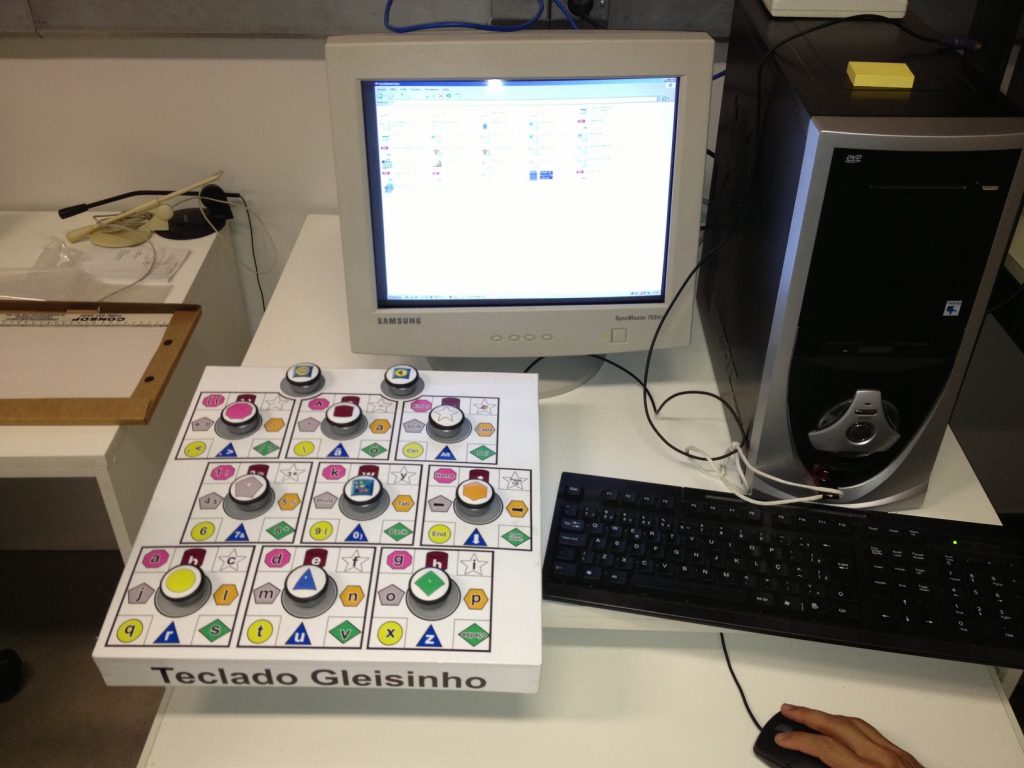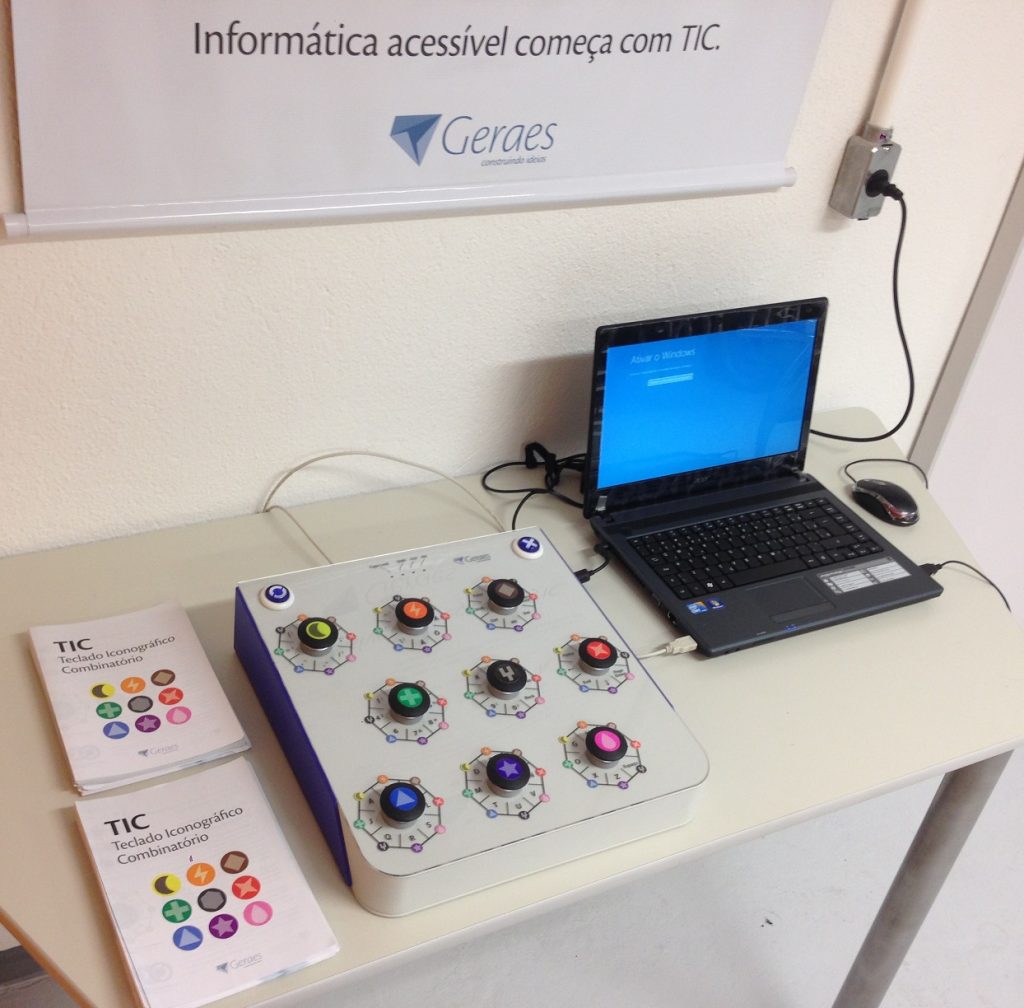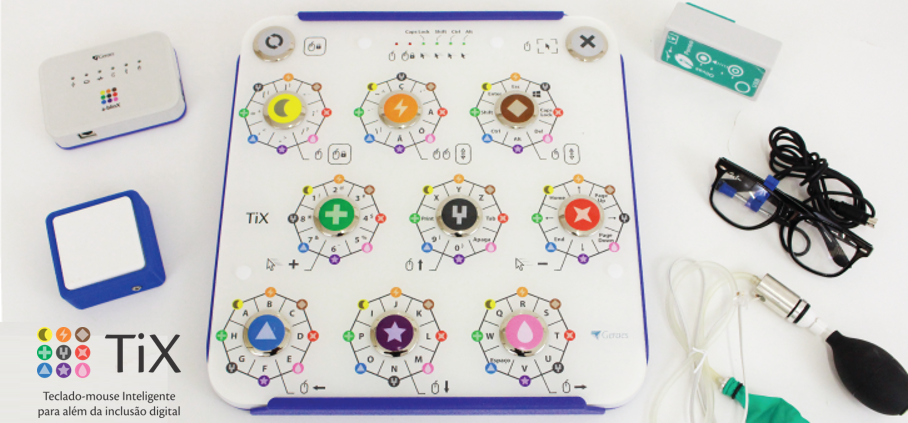History
From TIC to Key-X: The History of Gleisinho and the Combinatory Keyboard
Due to complications at childbirth, Gleison Fernandes de Faria, known as Gleisinho, was born with cerebral palsy. This irreversibly compromised his fine motor coordination, speech, and body balance.
Gleisinho studied at his city’s APAE, Itaúna/ State of Minas Gerais, Brazil, and due to his high learning level, he attended high school in a regular school. Fond of computers since a young age, Gleisinho decided to study Computer Science at the University of Itaúna, where he graduated.
Using a helmet adapted with a pointer to use the computer, Gleisinho decided, at the end of his graduation, to develop a more appropriate tool for people with functional limitations similar to his. Then came the concept for the Combinatory Keyboard, the object of his undergraduate thesis.
Gleisinho’s Innovative Keyboard Concept

Gleisinho’s Combinatory Keyboard Prototype
The idea of the Combinatory Iconographic Keyboard (TIC) was to allow the typing of any letter, number, symbol or command of a conventional keyboard using only nine buttons, which would be activated in double sequences. Thus, each two different buttons pressed would produce the typing of a character. This way, the keyboard could have large keys and a greater spacing between them, allowing its use by people with little motor coordination, or even with the feet or stumps.
In spite of having obtained the maximum note in his monograph, Gleisinho found it difficult to take his invention from the paper. He came to create a functional prototype of TIC, which needed software written by him to function properly on the computer. He still had, however, no support to carry out the project.
TIC – Combinatory Iconographic Keyboard (2014)
It was then that, in April 2013, during Reatech (a fair focused in technologies for rehabilitation, held annually in São Paulo), Gleisinho met Geraes Assistive Technology, a company from Belo Horizonte/MG focused on electronic innovation for people with disabilities. With the empathy of a shared State, a very successful partnership was born, which would allow, a year later, at the following Reatech edition, the launching of the first commercial version of the Combinatory Iconographic Keyboard.

MVP (Minimum Viable Product) of TIC – Combinatory Iconographic Keyboard
With a revised design and expanded functionalities, TIC had a big impact at the event. Soon, new ideas would appear to improve the device and expand its capabilities. One of the immediate demands was to include the possibility for TIC to control the mouse pointer. The other one was to allow its use by people unable to perform wide enough active movements to reach the panel keys.
Key-X – Assistive Panel for Computer Use (2015)
Then came along Key-X (TiX in Brazil), that represented the greatest evolution in relation to the Combinatory Iconographic Keyboard. Key-X works exactly like TIC for typing purposes, but, beyond that, it also replaces the mouse. It is much thinner and lighter than TIC and possesses touch-sensitive keys instead of mechanical keys, which allows the user to trigger them without needing force, just a light touch. Despite this characteristic, it is equally sturdy about rougher touches, being able to be triggered even with the feet.
Besides that, the most important Key-X feature in relation to TIC is that it can be optionally controlled through any external assistive trigger, meeting the demand for use of the device by people with more severe functional limitations, such as tetraplegics. In this mode of operation, the lights of each key light up alternately, in a scan, and the user clicks the trigger to activate the desired key when it lights up, instead of physically touching the panel.

Key-X Smart Keyboard is compatible with external switches
Photo: Karolina Ferraz
These features make Key-X an innovative and unprecedented assistive product in the word, as it caters to a wide array of people with different disabilities, and allows the unrestricted use of the computer, including internet browsing, social network access, using text editors and even games, all dispensing with the installation of any specific software.
Over the years, it kept improving and gaining more functionalities and software dedicated to special education and rehabilitation therapy, such as Simplix, becoming the most innovative platform for digital accessibility and school inclusion.

